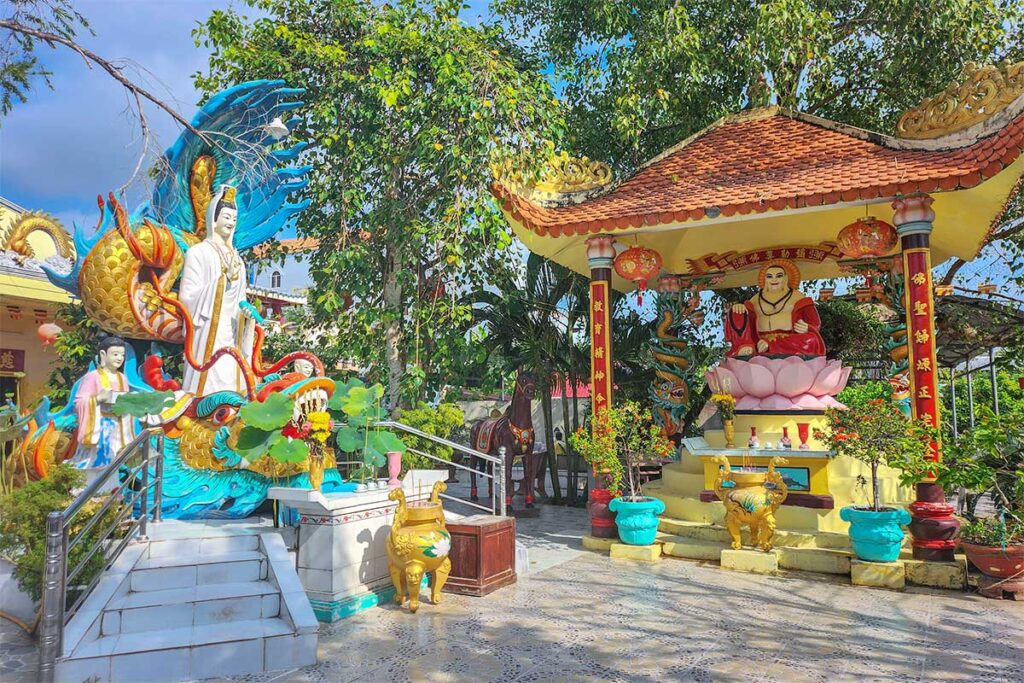What is Clay Pagoda (Chua Dat Set)
Location and Recognition
Clay Pagoda’s official name is Bửu Sơn Tự (Buu Son Tu), though everyone in Soc Trang knows it by its nickname, Chùa Đất Sét – literally “Clay Pagoda.” You’ll find it right in the center of Soc Trang City at 286 Ton Duc Thang Street, Ward 5, making it easy to combine with other stops in town. The site has been officially recognized as a provincial cultural heritage site, which reflects its unique character more than its scale—this is not a vast complex, but rather a modest temple with remarkable details inside.
History
The pagoda has roots going back nearly 200 years, when the Ngô family built a small shrine for home worship. For generations it remained a simple thatched hermitage, until the fourth abbot, Ngo Kim Tong (1909–1970), dramatically changed its fate. Without any formal training, he dedicated 42 years of his life to sculpting nearly 2,000 clay statues, along with towers, altars, and monumental candles. His work turned what was once a humble family shrine into one of the most unusual temples in Vietnam.
Cultural & Religious role
Clay Pagoda is not just an art project—it is still an active place of worship where locals come to burn incense, pray, and take part in ceremonies. What sets it apart is the way it blends elements of Buddhism, Taoism, and Confucianism in its statues and altars, reflecting the religious diversity of the Mekong Delta. This makes it very different from Soc Trang’s famous Khmer Theravada pagodas, such as Bat Pagoda or Kh’leang Pagoda, which follow a distinct Khmer architectural and religious tradition. Clay Pagoda feels more like a family temple that grew into something extraordinary through one man’s devotion.
Highlights when visiting Clay Pagoda
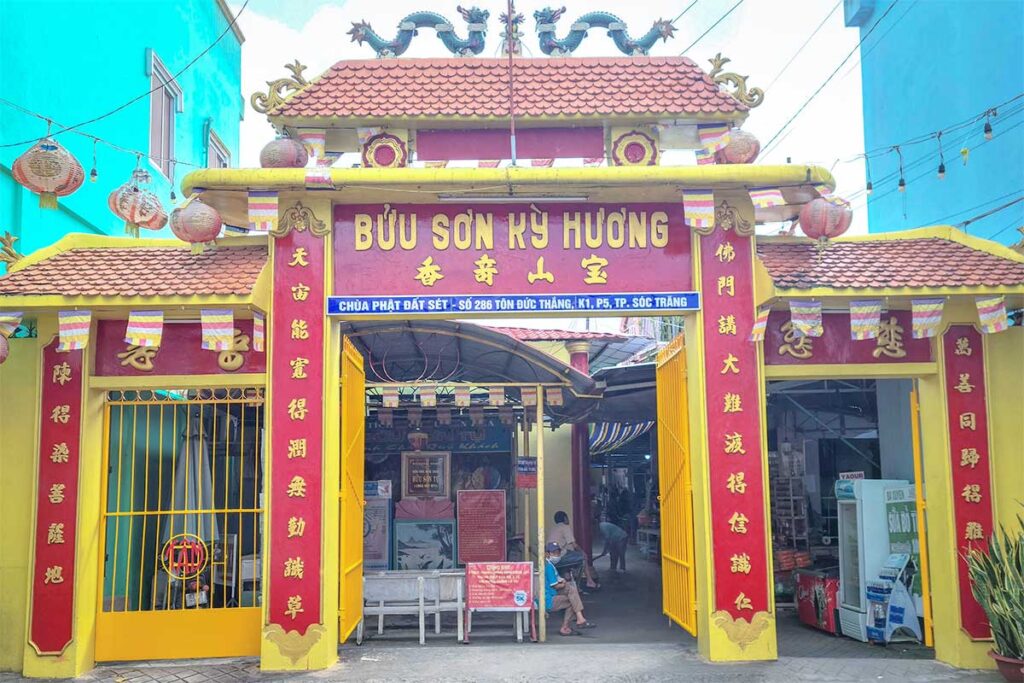
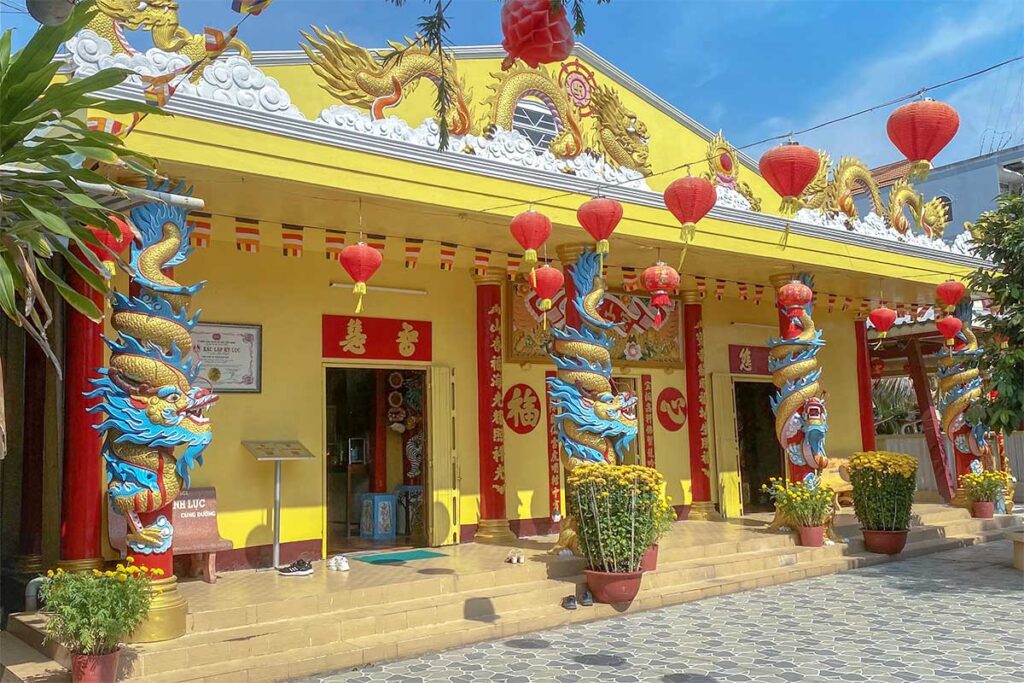
The main hall of Clay Pagoda is painted bright yellow with red details, dragon pillars, and hanging lanterns. It may look modest compared to grand Khmer temples in Soc Trang, but its colorful façade and dragon motifs make for a striking entrance. This is where most visitors enter before exploring the interior highlights.
2. Clay Statues
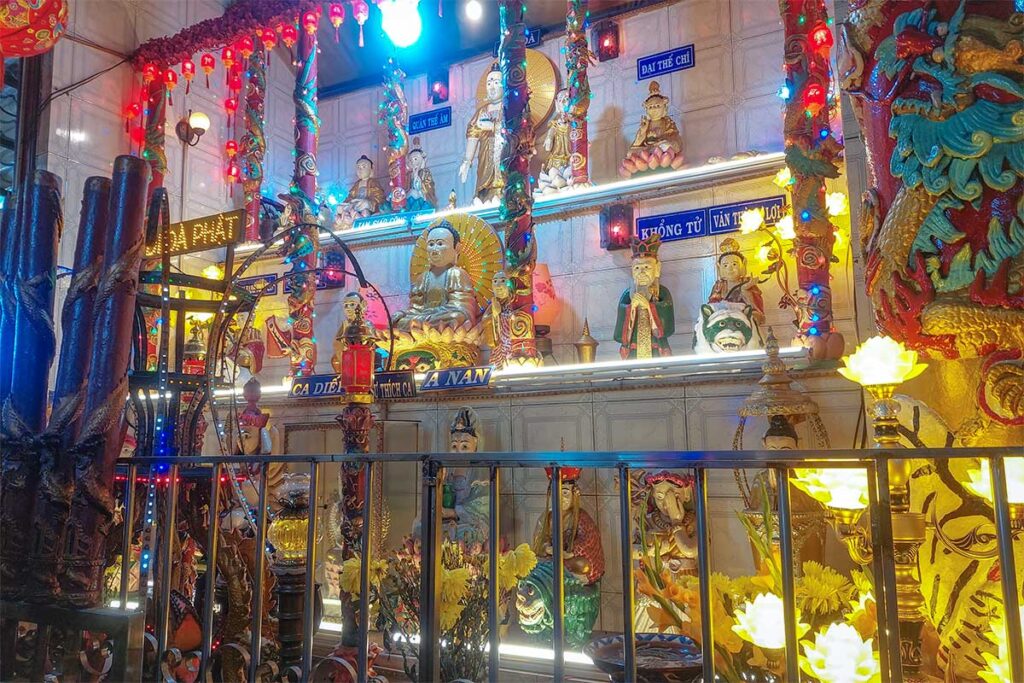
The main reason people come here is to see the nearly 2,000 clay statues packed into the small temple space. These include Buddhas, Bodhisattvas, deities, and mythical animals, each molded by hand over a period of decades. The technique was unusual: clay was ground, mixed with incense powder and resin, and then shaped over wire or wooden frames. Despite being made of such a fragile material, the statues have a surprisingly lifelike appearance, with details that resemble traditional wooden or bronze sculptures.
2. Bao Toa Lotus Throne
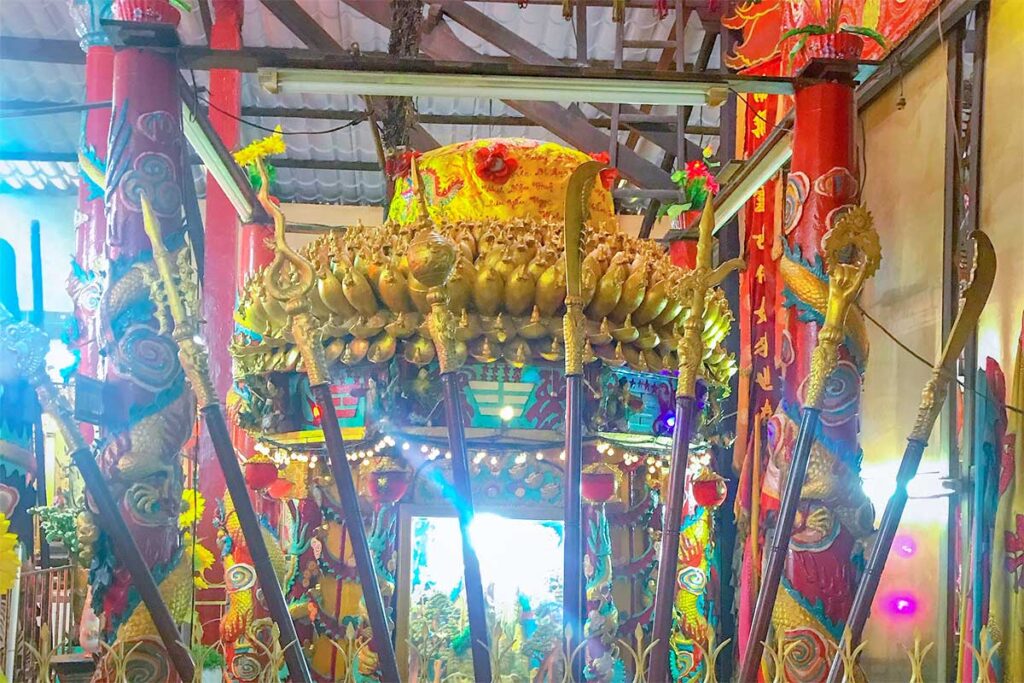
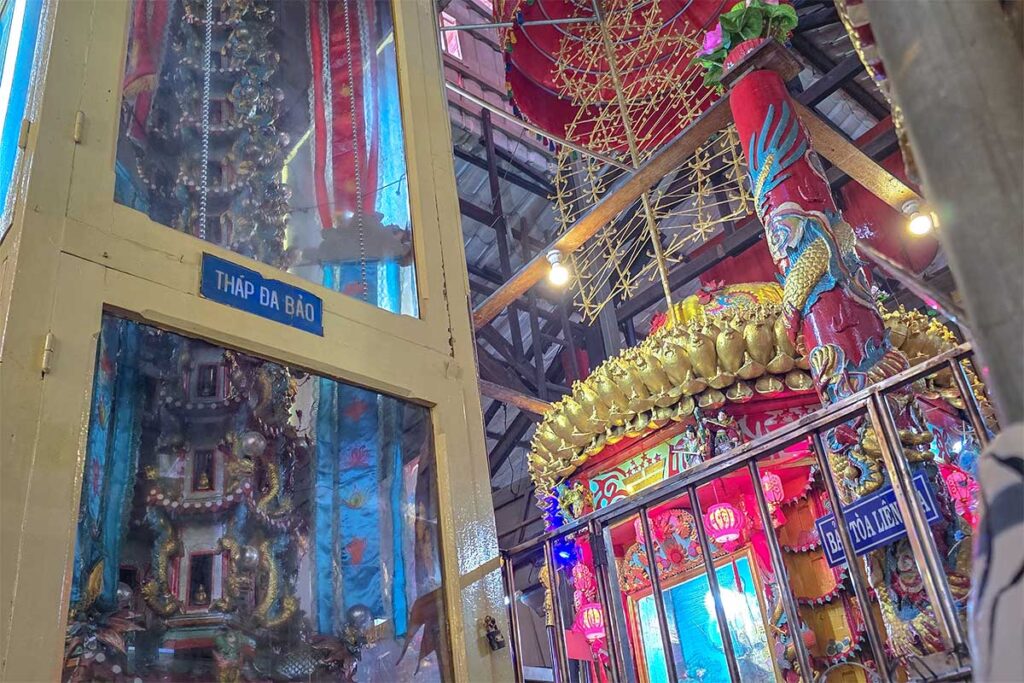
One of the most striking creations is the Bao Toa Lotus Throne, a large sculpture made up of 1,000 lotus petals, with each petal carrying a meditating Buddha. It’s a bold and symbolic piece, representing enlightenment and devotion. The sheer repetition of detail makes it impressive, especially considering it was shaped entirely from clay without formal training.
3. Da Bao Tower
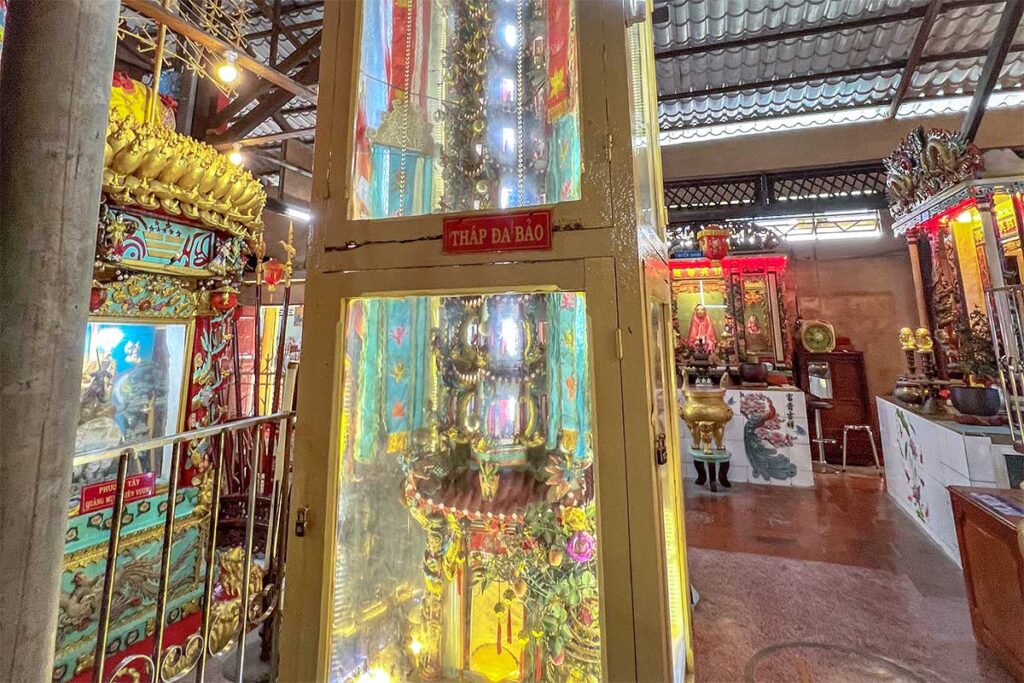
Another standout is the Da Bao Tower, built by Ngo Kim Tong in 1939 when he was only 30 years old. It rises about four meters high with 13 tiers, each level containing small niches with Buddha statues. In total, the tower has 208 doors and 156 winding dragons worked into its design. It feels almost like a miniature pagoda inside the temple, and it’s one of the most intricate pieces on display.
4. Giant candles
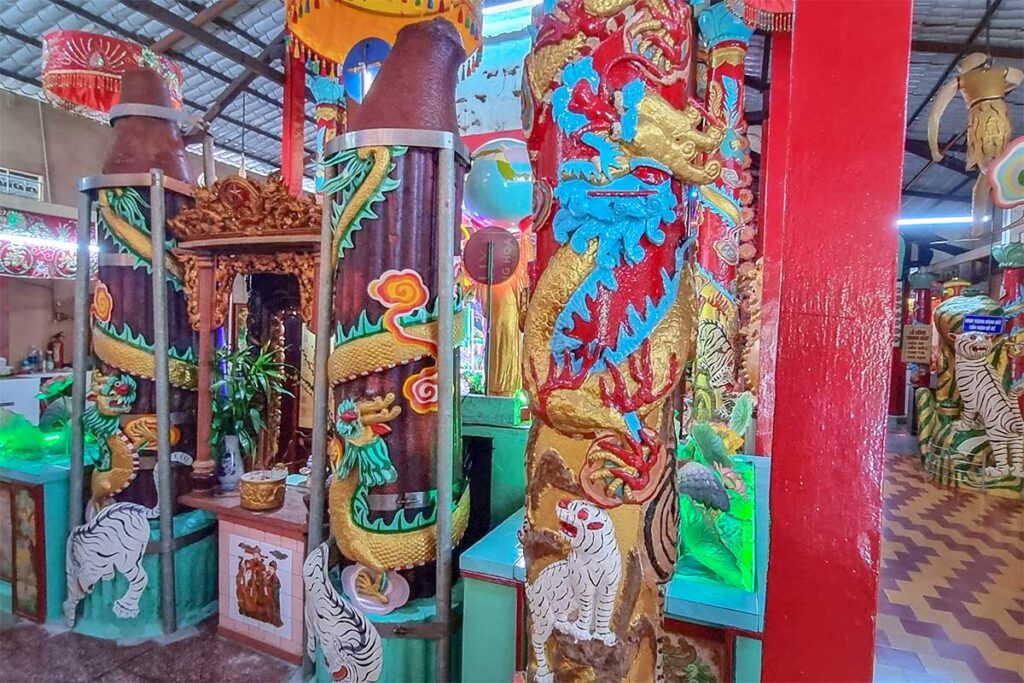
The pagoda is also famous for its giant candles—four pairs in total, each about 200 kilograms and 2.6 meters tall. Two of these have been burning since 1970, the year of Ngo Kim Tong’s passing, and they are still glowing today. They are less about spectacle and more about symbolism, representing eternal light and spiritual devotion. Seeing these massive candles still flickering after decades is one of the most unusual aspects of the temple.
5. Other notable works
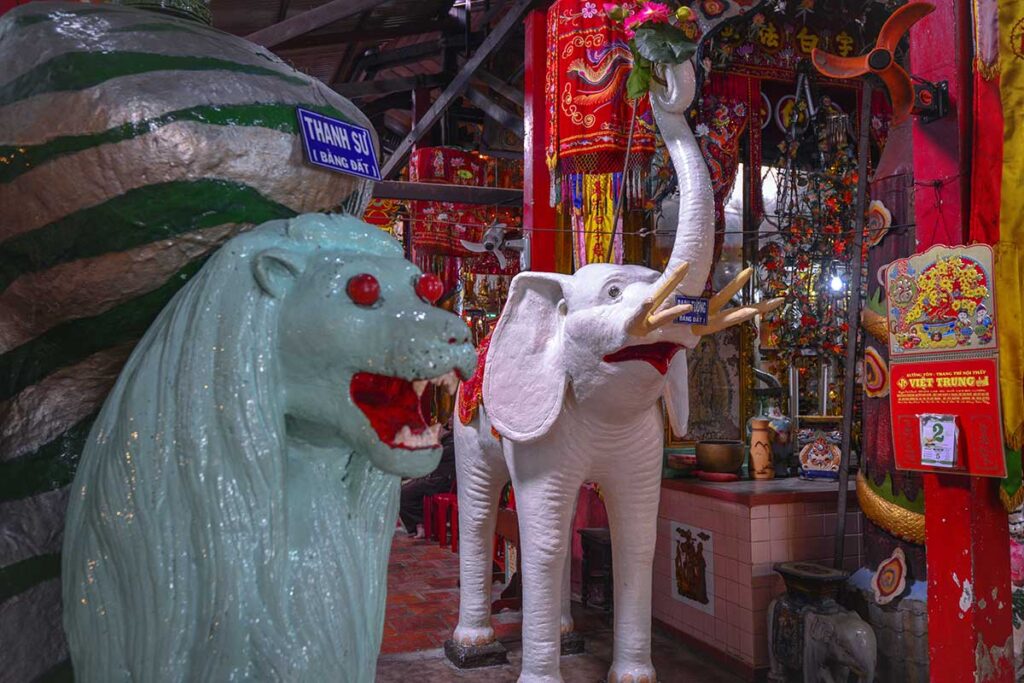
While exploring, you’ll also come across smaller but equally curious works. A six-tusked elephant references a dream of Buddha’s mother before his birth. The main altar, built from more than five tonnes of clay, is an impressive centerpiece. Dragons and mythical creatures appear throughout, worked into doorways, pillars, and decorative details.
6. Outdoor courtyard statues
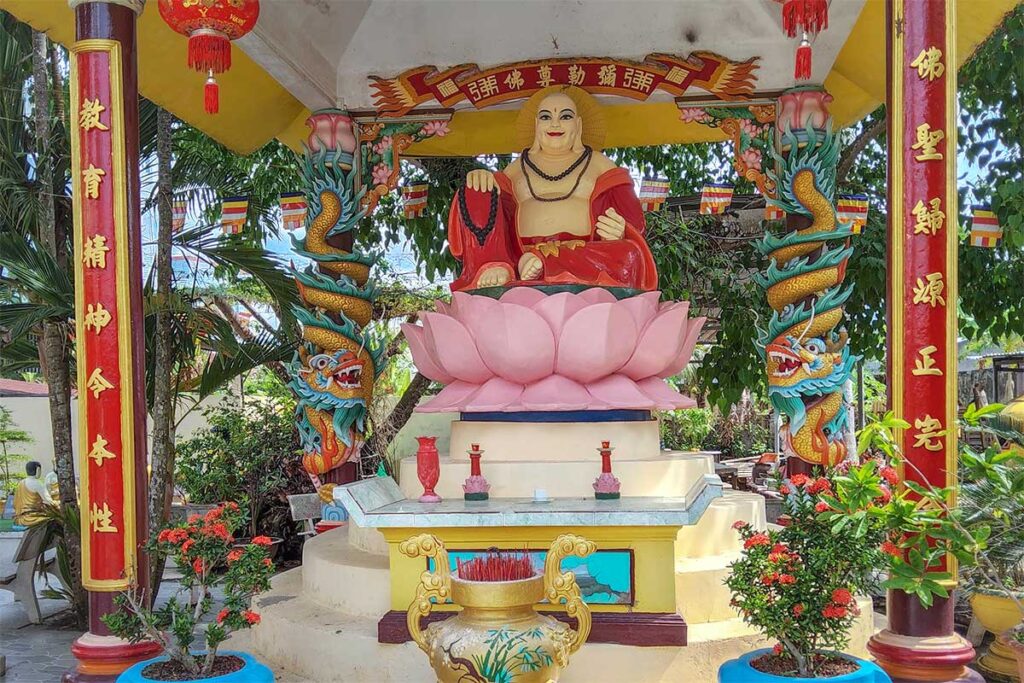
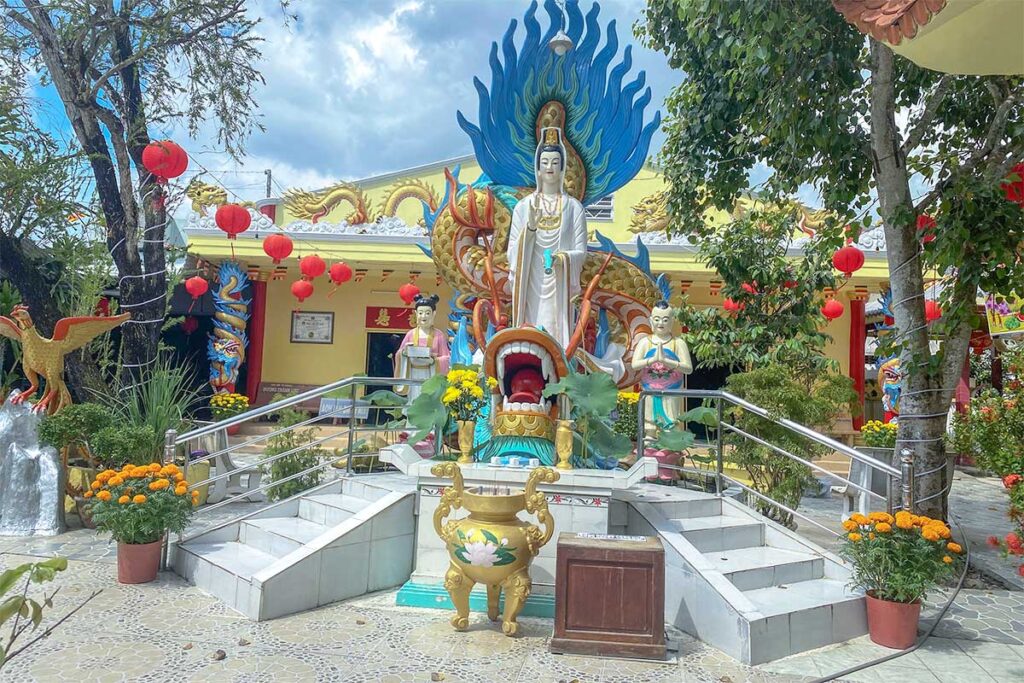
Beyond the clay masterpieces inside, the courtyard holds several large painted statues, including a cheerful Maitreya Buddha on a lotus pedestal, Guanyin with a dragon backdrop, and a scene of Buddha teaching his first disciples. These statues are not part of the historic clay collection but reflect the temple’s active role as a place of worship today. They add color and atmosphere, and make the grounds more engaging for a short stroll.
7. Atmosphere & Visitor experience
From the outside, Clay Pagoda looks modest—more like a family house than a temple. But step inside and the interior feels overwhelming, with every corner filled with statues, altars, and creations. The atmosphere is generally quiet and spiritual, though the crowded space means you’ll notice details only by looking closely. Because everything is fragile and made of clay, it’s important to walk carefully and avoid touching the artworks. Visiting usually doesn’t take more than 30–45 minutes, but it leaves a strong impression of dedication and craftsmanship.
Practical visiting information & Tips
Location & Getting there
Clay Pagoda is located at 286 Ton Duc Thang Street, Ward 5, right in the center of Soc Trang City. Its central position makes it easy to include on a half-day or full-day city tour. From Can Tho, it’s about 65 km (roughly 1.5–2 hours by car or bus). From Ho Chi Minh City, the journey is much longer (around 230 km or 5–6 hours), so most travelers visit when already in the Mekong Delta.
Opening hours & Entrance
The temple is usually open daily from morning until evening, without strict closing hours. Entrance is free of charge, though small donations are appreciated to help with upkeep. Unlike some touristy sites, there’s no ticket booth or pressure to contribute, so it feels more like a local place of worship than a commercial attraction.
Dress code & Etiquette
As with any temple in Vietnam, wear respectful clothing—cover shoulders and knees if possible. Inside, avoid touching the clay statues or leaning on altars. Photography is generally allowed, but it’s best to be discreet and respectful, especially if locals are praying.
Best time to visit
You can visit year-round, but morning hours are more comfortable thanks to cooler temperatures and softer light. Afternoons can be hot and less pleasant for walking around Soc Trang. The pagoda can be busier on full moon days, when locals come to pray, which adds atmosphere but also crowds.
Tips for families & Travelers
- If you bring children, remind them not to touch the clay statues, as they are fragile and irreplaceable.
- The pagoda itself is small and compact—most visits last 30–45 minutes at most.
- To make the trip worthwhile, plan to combine Clay Pagoda with other Soc Trang sights such as Bat Pagoda or Kh’leang Pagoda.
- Bring water, a hat, and sunscreen if you’re walking between sites in town.
Sights nearby Clay Pagoda
Soc Trang is home to a fascinating mix of Khmer, Chinese, and Vietnamese culture, and many of its highlights are just a short ride from Clay Pagoda. If you plan your visit well, you can easily combine several temples and cultural stops in a single day.
- Bat Pagoda (Chùa Dơi / Mahatup Pagoda) – The most famous pagoda in Soc Trang, known for the huge colony of fruit bats that roost in its trees. The combination of Khmer architecture and the spectacle of bats taking flight at dusk makes it a very different experience from Clay Pagoda.
- Kh’leang Pagoda – One of the oldest Khmer Theravada temples in Soc Trang, built in the 16th century. It’s valued for its calm atmosphere, traditional design, and cultural significance within the Khmer community.
- Chen Kieu Pagoda (Bowl Pagoda) – A Chinese-style temple decorated with ceramic bowls and porcelain fragments, giving it a colorful and unusual appearance.
- Soc Trang Museum – A small but useful stop if you’re interested in the province’s mix of ethnic cultures, including Khmer, Chinese, and Vietnamese communities.
- Nga Nam Floating Market – Located outside the city, this market is one of the most authentic in the Mekong Delta, with boats gathering at the five-way river intersection to trade produce and goods. Best visited early in the morning.
For more tips and a wider list of places to see, have a look at our full Soc Trang travel guide.
Is Clay Pagoda worth visiting?
Clay Pagoda is certainly worth visiting if you’re already in Soc Trang. Its collection of nearly 2,000 clay statues, intricate towers, and giant candles make it one of the most unusual temples in Vietnam. The story of one man dedicating four decades to shaping these works gives the place a cultural and human depth you won’t find elsewhere.
That said, it’s important to keep expectations realistic. The pagoda is small, modest from the outside, and a visit doesn’t take more than 30–45 minutes. It doesn’t have the sweeping grandeur of Khmer pagodas in the region, and it’s not the kind of place you’d travel across the country just to see.
In short, Clay Pagoda is best for travelers who enjoy history, unusual religious art, and local culture. If you’re rushing through the Mekong Delta, you won’t miss a must-see icon by skipping it. But if you’re exploring Soc Trang more deeply, it’s a rewarding stop that adds an interesting layer to the city’s cultural mix.
